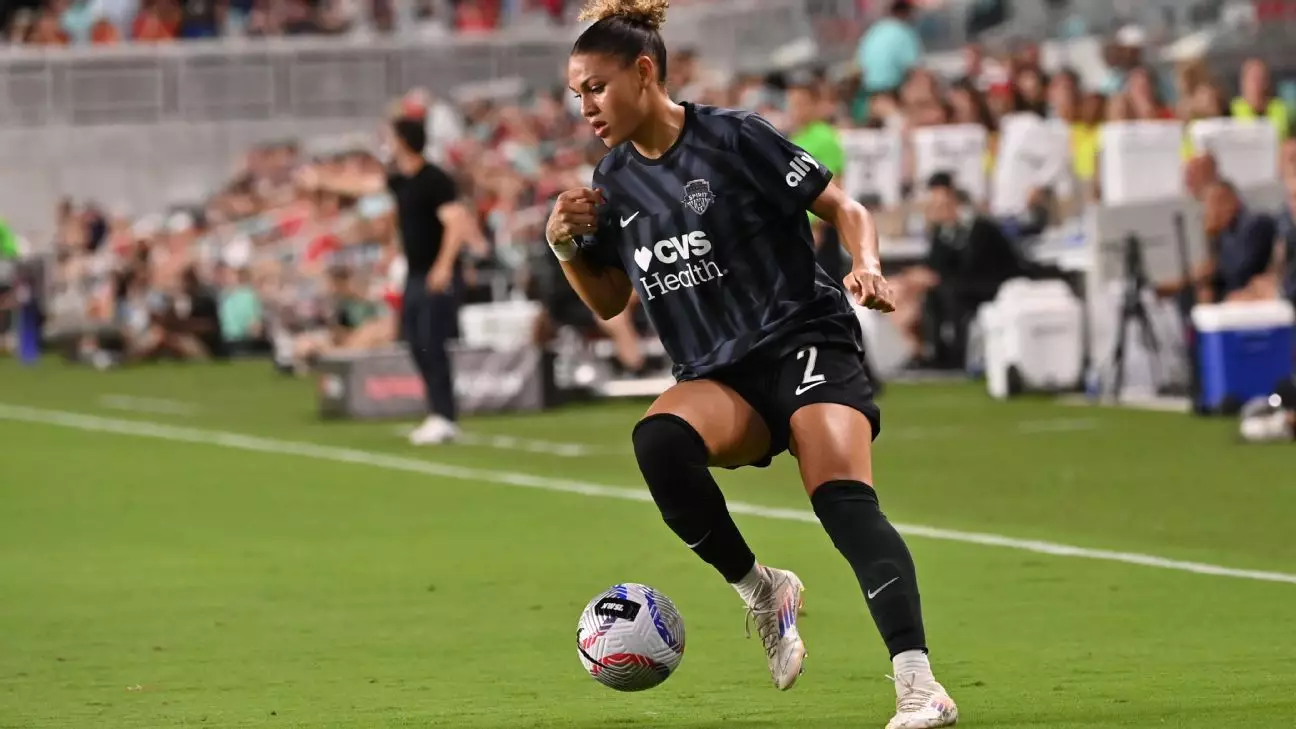Trinity Rodman’s return to the U.S. Women’s National Team (USWNT) marks a significant turning point not only for her career but also for the team as it gears up for future competitions. After a noteworthy Olympic gold-medal journey last summer, Rodman’s inclusion in the squad against Brazil represents both her resilience and the evolving landscape of women’s soccer in America. Coach Emma Hayes has summoned 24 players for these crucial matches, scheduled for April 5 and April 8, hinting at a strategic buildup to the upcoming 2027 World Cup.
Rodman’s impressive World Olympic performance, where she contributed significantly to securing the gold, came on the heels of an arduous season. Despite battling persistent back pain that sidelined her from several training camps, her recent appearance for the Washington Spirit indicates her determination to reclaim her spot among the elite. Even in the Spirit’s recent defeat to the Kansas City Current, Rodman showcased her pivotal role in the team’s offense.
The Impact of Experience and Youth
The impending matches against Brazil represent a clash imbued with historical significance—the USA triumphed over Brazil in the Olympic final, a decisive victory that underscored America’s dominance in women’s soccer. Yet, this time, the roster reflects a blend of veteran presence and youthful vigor. Notably, 11 players will sport fewer than 10 caps, suggesting a refreshing infusion of new talent eager to stamp their authority in the squad.
The induction of promising talents such as 17-year-old Lily Yohannes and 19-year-old Claire Hutton encapsulates this era of rekindled energy within the team. While established players like Mallory Swanson and Sophia Smith (now Wilson) take time away from the pitch for personal reasons, these young hopefuls have the chance to shine and build a legacy of their own. Yohannes, in particular, impressed during the SheBelieves Cup and provides an attacking flair that could be pivotal in these matches.
Hayes’s Vision for the Future
Emma Hayes’s approach to roster selection is both ambitious and reflective of a larger strategy aimed at creating a sustainable pipeline of talent. She emphasizes competition, insisting that every athlete must earn their place. This mentality fosters a culture of excellence and commitment, essential for a program that aspires to not only maintain its historical dominance but also to innovate and adapt in an evolving global soccer landscape.
Furthermore, Hayes has prioritized training and evaluation, particularly in response to the potential retirement of prominent figures like Alyssa Naeher. The inclusion of younger players alongside seasoned competitors allows for knowledge transfer that is invaluable for personal and team growth. The arrival of veteran players like Alana Cook and Ashley Hatch underscores the delicate balance between experience and new blood.
The Road Ahead: Challenges and Opportunities
These upcoming games against Brazil are not just about the scoreline; they represent an opportunity for experimentation and consolidation of team dynamics. With the Canadian and Japanese teams increasingly competitive on the global stage, the United States must continue to capitalize on its rich talent pool while evolving its playing style.
The challenges are numerous, particularly as the team faces the mental and physical demands of high-stakes international play. However, the creativity and ambition evident in coach Hayes’s selection could offer rich dividends. It’s essential for the USWNT to find its groove again, especially since women’s soccer is experiencing a renaissance, with more talent emerging from youth academies across the country.
In this milieu, Trinity Rodman’s return is more than just a personal comeback; it symbolizes the rebirth of a potentially transformative phase for the USWNT as they pave the way toward the next World Cup with passion and purpose. The future of American women’s soccer isn’t just promising; it’s poised for greatness.


Napsat komentář